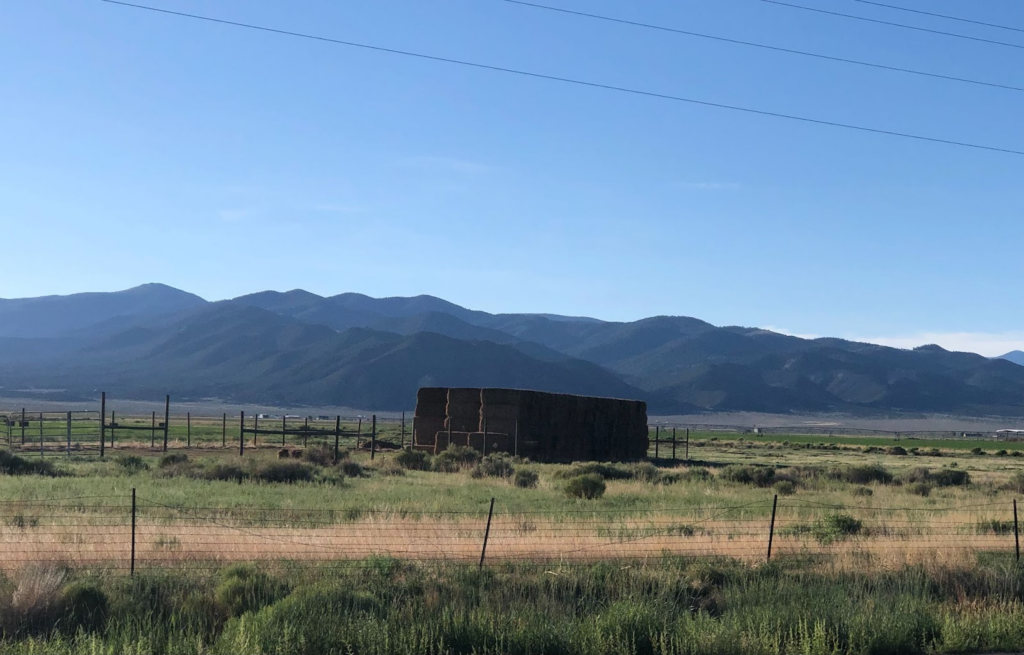After two semesters working closely with the Colorado Cattlemen’s Agricultural Land Trust (CCALT) Additive Conservation subcommittee, I was excited to support the launch of the Agricultural Resiliency Fund (ARF). The ARF is an internally-managed fund that supports landowner projects to improve agricultural viability and conservation values on properties that hold CCALT easements. I partnered with CCALT to identify and establish funding priorities for the ARF and to develop the application and scoring matrix for the allocation of funding. Following the completion of this work, an initial pilot round of funding has been awarded. With priorities set to evolve over time, the ARF will award funding annually, providing opportunities for improved stewardship on ranchlands across the state. The establishment and implementation of the ARF demonstrate CCALT’s ongoing commitment to the active conservation and stewardship of working lands.
The ARF has launched during a moment of great urgency within the conservation space. I recently attended a panel of conservation professionals, during which the panelists spoke of the “generational moment” of land conservation we find ourselves in – a moment of unprecedented available funding, largely coming with the Inflation Reduction Act, and a moment of unprecedented challenges, posed to a future wherein the tools used by previous generations of conservationists may no longer be sufficient. As land values increase across the country, urban sprawl expands and development marches ahead. The strategies that marked radical successes and radical reconsiderations of conservation in previous generations are no longer so radical or so sufficient. I often hear the sentiment that the easy conservation wins have already been won: the land that was obviously ecologically valuable and economically available is already preserved. Now, we must develop the tools, frameworks, and funding structures for progressing towards healthier landscapes and healthier communities. The central question therein remains: once land is conserved, once the conservation tools as they have existed for the previous generation are no longer sufficient, then what?

Both the miracle and the intractable challenge inherent to conservation easements, the legal tool used by land trusts across the country, is the commitment to perpetuity. Once an easement is established, the landowner holds the legal obligation to maintain the conservation values of the property in perpetuity. This responsibility is transferred to future property owners and the land trust that holds the easement ensures that the obligations are maintained. Conservation easements have long been an effective tool for preserving land from development and subdivision. Yet, conservation is not fully accomplished with the establishment of a legal document. Once land is conserved, active management and stewardship are often necessary to maintain the ecological values present. However, the active management that meaningful conservation requires is often resource-intensive and inaccessible to farmers and ranchers struggling to stay afloat in today’s agricultural economy. Funding to support the stewardship of agricultural and working lands is limited. CCALT’s Agriculture Resiliency Fund aims to address this need.

The funding the ARF allocates to landowners, whose properties are held in conservation easements maintained by CCALT, will allow ranchers to continue providing the public services we all benefit from – undeveloped landscapes that support healthy watersheds, native habitat that supports wildlife populations, and carbon-sequestering soil that supports the ongoing, uphill battle against a changing climate. By supporting the viability of agricultural operations and the conservation of ecological values, the ARF supports the continuation of ecological processes and ecosystem services. The ARF provides a path forward in an ongoing commitment to conservation. In the miracle and intractable challenge of perpetuity, conservation is not a one-time action but a continual process. Proactive, responsible stewardship, and the funding necessary to accomplish it, are essential to ecologically and economically resilient working lands across the west.
